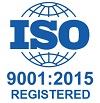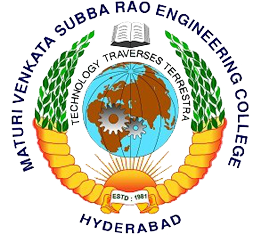BIT 305 WITH EFFECTFROM THE ACADEMIC YEAR 2012-2013
OPERATING SYSTEMS
Instruction 4 Periods per week
Duration of University Examination 3Hours
University Examination 75Marks
Sessional 25 Marks
UNIT-I
Introduction-Computer System Organization & Architecture, Operating System Structure & Operations, Process, Memory and Storage Managements, Protection and Security, Distributed and Special-Purpose Systems, Computing Environments.
Systems Structures-Operating-System Services, User Operating- System Interface, System Calls, Type of System Calls, System Programs, Operating-System Structure, Virtual machines, Operating-System Generation, System Boot.
Process Concept-Overview, Process Scheduling, Operations on Processes,InterprocessCommunication, Examples of IPC Systems, Communication in Client Server Systems.
Multithreaded Programming-Overview, Multithreading Models, Thread Libraries, Threading Issues, Operating-System Examples.
UNIT-II
Process Scheduling-Basic Concepts, Scheduling Criteria, Scheduling Algorithms,MultiProcessorScheduling, Thread Scheduling, Operating System Examples, Algorithm Evaluation. Process Coordination Synchronization-Background, The Critical-Section
Problem, Peterson’s Solution, Synchronization Hardware, Semaphores, Classic Problems of Synchronization, Monitors, Synchronization Examples,AtomicTransactions. Deadlocks-System Model, Deadlock Characterization, Methods for Handling Deadlocks, Deadlock Prevention, Deadlock Avoidance, Deadlock Detection, RecoveryFromDeadlock.
UNIT-III
Memory-Management Strategies-Background, Swapping, Contiguous Memory Allocation, Paging, Structure of the Page Table, Segmentation,Example :The Intel Pentium.
Virtual Memory Management-Background, Demand Paging, Copy-on- write, Page Replacement, Allocation of Frames, Thrashing, Memory- Mapped Files, Allocating Kernel Memory, Other Considerations, Operating-System Examples.Storage Management-File System, File Concept, Access Methods, Directory Structure, File-System Mounting, File Sharing, Protection.
UNIT-IV
Implementing File Systems-File System Structure, File-System implementation, Directory Implementation, Allocation Methods, Free- Space Management, Efficiency and Performance, Recovery, Log- structured File Systems, NFS,Example: The WAFL File System. Secondary-Storage Structure-Overview of Mass-storage Structure, Disk Structure, Disk Attachment, Disk Scheduling, Disk Management, Swap-Space Management, RAID Structure, Stable-Storage
Implementation, Tertiary-Storage Structure, I/O Systems-Overview, I/O Hardware, Application I/O Interface, Kernel I/O Subsystem, Transforming I/O Request to Hardware Operations,
STREAMS,Performance.
UNIT-V
Protection and Security-Goals of Protection, Principles of Protection, Domain of Protection, Access Matrix, Implementation of Access Matrix, Access Control, Revocation of Access Rights, Capability-Based Systems, Language-Based Protection. System Security-The Security Problem, Program Threats, System and Network Threats, Cryptography as a Security Tool, User Authentication, Implementing Security Defenses,Firewallingto Protect Systems and
Networks, Computer Security Classification, AN Example : WindowsXP.
SugestedReading:
AbrahamSilberschatz,Peter Galvin, Greg Gagne,“Operating SystemPrinciples”Seventh Edition, 2006.
References :
1. A.Tanenbaum-“Modern Operating Systems“,New edition, Pearson Education.
2. William Stallings-“Operating Systems”Fifth edition, Pearson Education,2005.
3.Ida M. Flynn,“Understanding Operating Systems“,4th edition.



